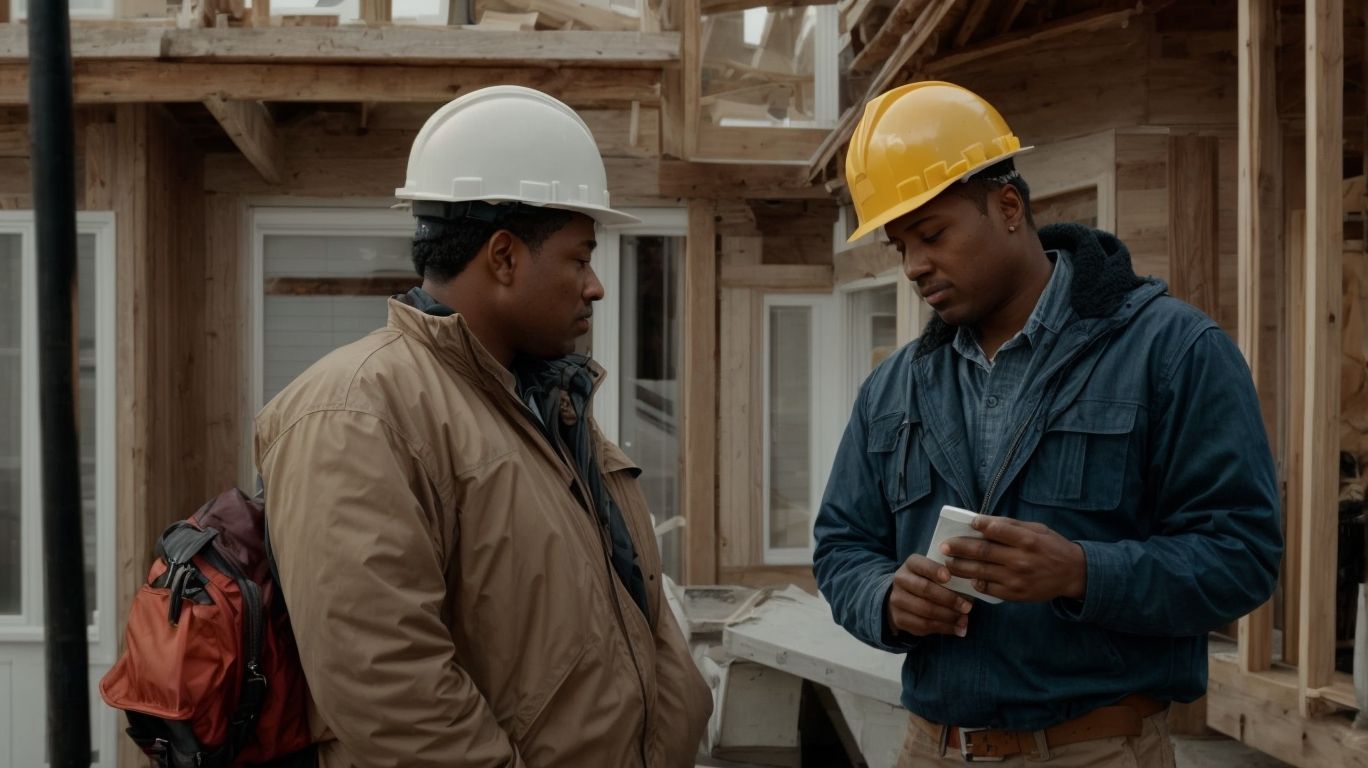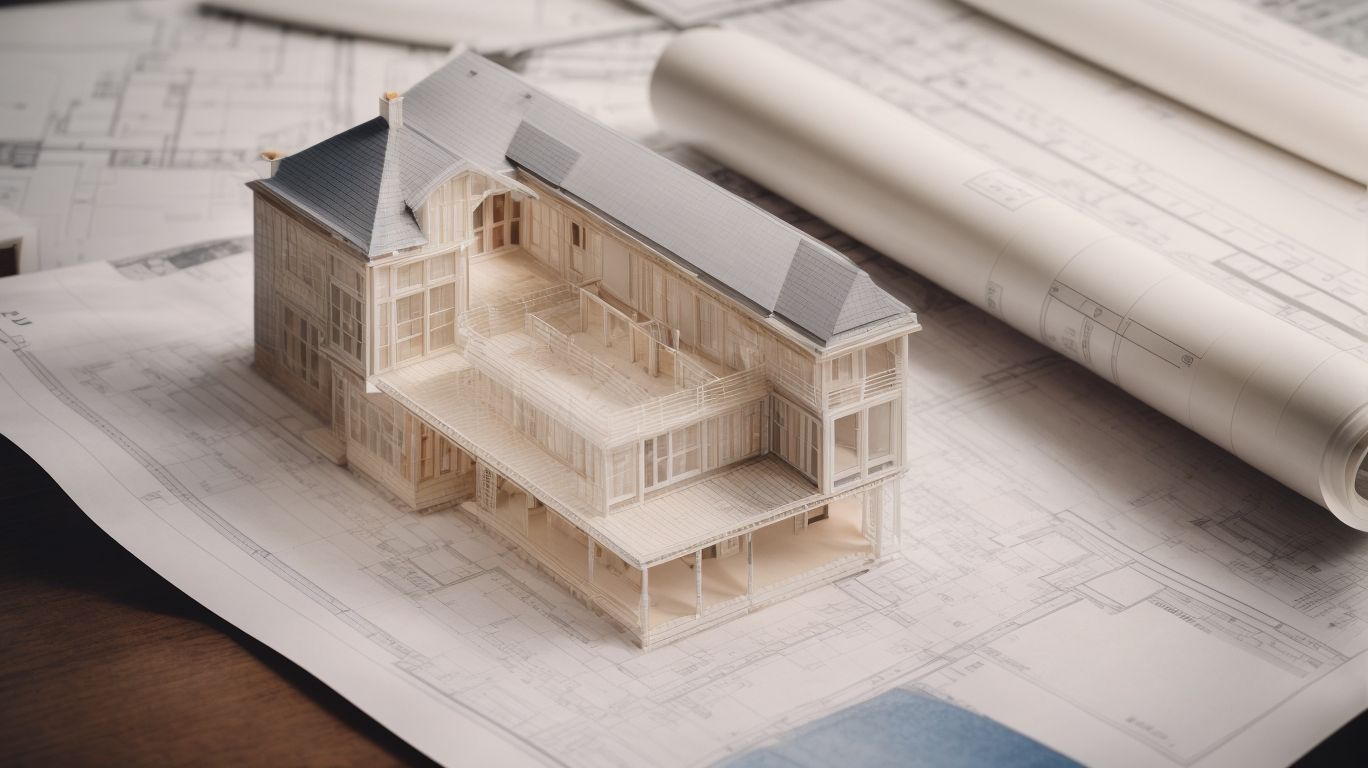
Home Remodeling in SF: Your Structural Engineering Questions Answered
Home remodeling in San Francisco is a popular and often necessary endeavor for homeowners looking to update and enhance their living spaces. Whether it’s a kitchen renovation, bathroom remodel, room addition, or deck and patio construction, there are numerous types of projects that can transform a home and improve its functionality and aesthetic appeal.
The process of home remodeling involves several crucial steps, including:
- Planning
- Design
- Obtaining permits
- Demolition
- Construction
- Finishing
Structural engineering plays a vital role in ensuring the safety and integrity of the remodeling projects, and it’s essential to address common questions regarding structural changes, permits, costs, timelines, and the need for a structural engineer.
In this article, we will delve into the ins and outs of home remodeling in San Francisco and provide valuable insights into the role of structural engineering, as well as answer some of the most common questions associated with this process. Whether you’re considering a home remodel or simply seeking to expand your knowledge in this area, this comprehensive guide aims to provide you with the information you need to make informed decisions and navigate the complexities of home remodeling in San Francisco.
What Is Home Remodeling in SF?
Home remodeling in SF involves the renovation, improvement, or enhancement of residential properties in San Francisco to meet the specific needs and preferences of homeowners.
This process can encompass a variety of activities such as updating kitchen and bathroom spaces, expanding living areas, or repurposing underutilized areas. In the context of San Francisco, where housing trends and styles evolve, home remodeling plays a vital role in preserving historical charm while integrating modern functionality.
From reimagining interior layouts to enhancing energy efficiency, the scope of residential construction in SF is wide-ranging and multifaceted, contributing to the overall appeal and value of properties in this diverse and dynamic city.
Why Should You Consider Home Remodeling in SF?
Considering home remodeling in SF offers homeowners the opportunity to enhance their living spaces, increase property value, and tailor their homes to their specific preferences and lifestyle needs.
This process allows for the addition of modern amenities and design elements that can significantly improve the functionality and aesthetic appeal of the property. Remodeling can provide energy-efficient upgrades, such as improved insulation and windows, leading to potential cost savings on utilities. By investing in home remodeling, homeowners can create a space that aligns with their evolving needs, whether it’s expanding a kitchen, adding extra rooms, or creating a more open floor plan to foster a better sense of unity and comfort within their homes.
What Are the Different Types of Home Remodeling Projects in SF?
Home remodeling projects in SF encompass various types of renovations, including kitchen remodeling, bathroom renovations, room additions, and the construction of decks and patios to enhance residential properties.
These renovations are popular among homeowners seeking to revamp their living spaces and increase property value. Kitchen remodeling projects often involve modernizing and optimizing the functionality of the heart of the home, while bathroom renovations focus on creating luxurious and relaxing spaces.
Room additions cater to the needs of growing families, providing extra living space, and enhancing comfort. Decks and patios offer outdoor living areas perfect for entertaining guests and enjoying the favorable San Francisco weather.
Kitchen Remodeling
Kitchen remodeling is a popular home renovation project that involves redesigning, upgrading, or reconfiguring the kitchen space to enhance functionality, aesthetics, and overall appeal.
It is essential to consider various design elements when planning a kitchen remodel, such as cabinet layout, countertop materials, lighting fixtures, and flooring options. Renovation processes often include demo work, plumbing and electrical updates, installation of new appliances, and finishing touches like paint and hardware.
Developing a detailed building plan is crucial to ensure that the project progresses smoothly and stays within budget. A well-thought-out plan can help minimize unexpected issues and streamline the entire renovation process.
Bathroom Remodeling
Bathroom remodeling involves the renovation or reconstruction of bathroom spaces to improve functionality, visual appeal, and the use of high-quality construction materials to ensure durability and aesthetics.
These renovations often encompass a wide range of design choices, including the selection of fixtures, tiles, lighting, and storage solutions. The integration of modern and efficient design elements, such as energy-efficient appliances and water-saving features, can drastically enhance the overall appeal and sustainability of the space.
Renovating bathrooms also plays a significant role in increasing the property value of residential homes, as potential buyers and renters often prioritize updated and well-maintained bathrooms.
Room Additions
Room additions involve expanding the living space of a home through construction, requiring careful planning, adherence to building codes, and obtaining the necessary permits for residential expansion.
The construction process for room additions involves various stages, from initial design to structural changes and finishing touches. Building permits are essential to ensure that the expansion meets safety and structural standards. Obtaining permits involves submitting plans and paying fees, with the local building department ensuring compliance.
With proper planning and permits in place, room additions can significantly impact a home’s value and functionality, providing increased living space for growing families or creating new areas for relaxation and entertainment.
Deck and Patio Construction
Deck and patio construction involves creating outdoor living spaces that require careful consideration of seismic retrofit standards, ensuring structural integrity and safety in residential environments.
The process of constructing a deck or patio involves adherence to residential construction standards to ensure that the outdoor space is not only aesthetically pleasing but also durable and safe. Proper construction techniques help in creating a solid foundation, providing a reliable outdoor area for recreational activities and social gatherings. Seismic retrofit is particularly important as it strengthens the structure of the deck or patio, reducing the risk of damage during seismic events and ensuring long-term stability and functionality of the outdoor living space.
What Are the Steps Involved in Home Remodeling in SF?
The home remodeling process in SF typically involves:
- Planning and design
- Obtaining necessary permits
- Executing demolition and construction activities
- Culminates in finishing touches and clean-up
requiring efficient project management throughout.
During the planning and design phase, homeowners work with architects and designers to create blueprints and layouts that align with their vision. Once the plans are finalized, they must apply for permits from the local authorities, which can involve navigating zoning ordinances and building codes.
With permits secured, the construction phase begins, involving demolition, framing, electrical, plumbing, and HVAC work. Project management ensures that timelines are adhered to, subcontractors are coordinated, and quality control is maintained, leading to a successful and timely home remodeling project.
Planning and Design
The initial phase of home remodeling involves meticulous planning and design, which may necessitate engineering consultation to ensure structural integrity and adherence to building regulations while creating comprehensive building plans.
This phase requires a deep understanding of architectural principles, material selection, and spatial organization to meet the functional and aesthetic goals of the remodel. By integrating engineering expertise, homeowners can address potential structural challenges and maximize the use of available space. It is essential to consider building codes and zoning requirements to avoid setbacks during the construction phase.
With a well-thought-out plan and compliance with regulations, the remodeling process can proceed smoothly, ultimately leading to a successful and sustainable transformation of the home.
Obtaining Permits
Obtaining building permits for home remodeling projects is essential, requiring adherence to building codes and considerations for seismic retrofit in San Francisco to ensure the structural integrity and safety of the renovated property.
These permits serve as a crucial aspect of any renovation project, as they ensure that the construction work meets the necessary safety and quality standards. Obtaining permits also demonstrates compliance with local regulations, which is essential for avoiding potential legal issues and ensuring the proper valuation of the property.
Considering seismic retrofit measures during the permit acquisition process is imperative, especially in regions with high seismic activity, such as San Francisco, to mitigate potential risks and enhance the resilience of the property against earthquakes.
Demolition and Construction
The demolition and construction phase of home remodeling involves the use of high-quality construction materials, potential foundation repair, and adherence to structural engineering standards to ensure the integrity of load-bearing walls and overall construction.
This includes carefully dismantling existing structures, evaluating the condition of the foundation, and incorporating suitable reinforcement if needed. The selection of construction materials such as steel, concrete, or timber is crucial in ensuring stability and durability.
Attention to detail during the reconstruction process is essential to align with safety codes and industry regulations, ultimately contributing to the structural integrity of the renovated property.
Finishing and Clean-up
The final stages of home remodeling encompass finishing touches and clean-up activities, which may involve retrofitting for enhanced structural stability and the utilization of construction materials to ensure long-lasting residential improvements.
This phase involves meticulously adding the final details such as trim work, painting, and fixture installations to bring the remodeling project to completion. Thorough clean-up is essential to give the renovated space a polished and welcoming appearance.
Retrofitting aspects may include reinforcing structural elements, such as foundation or support beams, to ensure that the home is equipped to withstand potential stresses over time. This proactive approach contributes to the long-term durability and safety of the renovated property.”
How Does Structural Engineering Play a Role in Home Remodeling in SF?
Structural engineering plays a crucial role in home remodeling in San Francisco, encompassing the assessment of foundations, load-bearing walls, and the overall structural integrity of residential properties to ensure safe and compliant construction practices.
This role involves analyzing the existing structural components of a home, evaluating their capacity to bear weight and support the overall structure. By conducting thorough assessments, structural engineers can identify any areas of concern and determine the necessary measures to reinforce or modify the existing framework, ensuring that the remodeled home meets safety standards and regulatory requirements.
Emphasizing structural integrity during the remodeling process is paramount in maintaining the long-term stability and safety of the property.
What Are the Common Structural Engineering Questions for Home Remodeling in SF?
When embarking on home remodeling projects in SF, homeowners often encounter common structural engineering questions related to potential structural changes, permit requirements, cost considerations, project duration, and the necessity of hiring experienced structural engineers for the renovation process.
Understanding the implications of structural changes, including load-bearing walls, foundation alterations, or room additions, is crucial in the planning phase. Navigating permit requirements and ensuring compliance with local regulations can significantly impact the project’s timeline and budget.
Estimating the costs associated with structural modifications and factoring in professional expertise are vital steps for a successful renovation endeavor. Professional structural engineers play an integral role in conducting thorough assessments, providing sound recommendations, and devising efficient solutions to uphold the structural integrity of the renovated space.
What Structural Changes Can Be Made to My Home?
Homeowners often inquire about the feasible structural changes that can be made to their properties, encompassing considerations for seismic retrofit, construction alterations, and retrofitting processes to enhance structural integrity.
These modifications are crucial for reinforcing the foundation and overall resilience of the home. The seismic retrofit needs in earthquake-prone areas drive the necessity for additional structural support, such as foundation bolting and bracing.
Construction alterations can involve expanding load-bearing walls or securing existing framing to meet current building codes and safety standards. Retrofitting plays a pivotal role in fortifying the property against potential structural vulnerabilities, providing homeowners with a sense of security and peace of mind.
Do I Need a Permit for Structural Changes?
Understanding the permit requirements for structural changes is essential, necessitating compliance with building codes and the acquisition of building permits to ensure the legality and safety of the renovation activities.
It’s crucial to abide by the specific building codes established by local authorities to guarantee that all structural modifications meet the necessary safety and structural integrity standards. The acquisition of building permits is a fundamental step in this process, as it ensures that the proposed changes adhere to legal guidelines and are overseen by qualified professionals.
By obtaining permits, homeowners can confidently move forward knowing that their renovations are compliant with the law and uphold the highest levels of safety and quality.
How Much Will Structural Changes Cost?
The cost assessment for structural changes in home remodeling involves considerations for renovation expenses, construction materials, and effective project management to ensure the efficient allocation of resources and budgeting for the renovation activities.
Implementing structural changes often results in a complex financial landscape, where renovators have to meticulously plan and allocate funds for a myriad of expenses. Renovation costs encompass a wide range of aspects, including labor, permits, design fees, and unexpected fluctuations in prices for materials such as lumber, steel, and fixtures. Project management plays a crucial role in streamlining these financial facets, ensuring that the allocated budget effectively matches the evolving needs and expenses of the renovation project.
How Long Will Structural Changes Take?
Determining the timeframe for structural changes is crucial, requiring efficient project management, construction coordination, and realistic timelines to ensure the timely completion of renovation activities without compromising quality.
The project timeline plays a pivotal role in streamlining the process and ensuring that each phase aligns with the overall schedule. Effective communication and coordination among the construction team, subcontractors, and suppliers are essential for adhering to the established timelines.
Project management also involves anticipating potential delays, allocating resources efficiently, and resolving any unforeseen issues promptly to minimize disruptions. By integrating these considerations, the renovation project can progress smoothly towards completion, meeting the set timelines and quality standards.
Do I Need to Hire a Structural Engineer for My Home Remodeling Project?
The involvement of a skilled structural engineer in home remodeling projects is often essential, particularly for addressing seismic retrofit needs, ensuring compliance with building regulations, and upholding the structural integrity of renovated properties.
Their expertise is crucial in evaluating the existing structure, identifying potential weaknesses, and devising effective solutions to enhance the building’s resilience against seismic activities. Professional guidance during the renovation process helps in implementing modifications that align with local codes and standards, minimizing the risk of structural failure and ensuring the safety of occupants.
By engaging a structural engineer, homeowners can have peace of mind knowing that their renovated property has been expertly assessed and fortified for long-term durability and safety.




No Comments